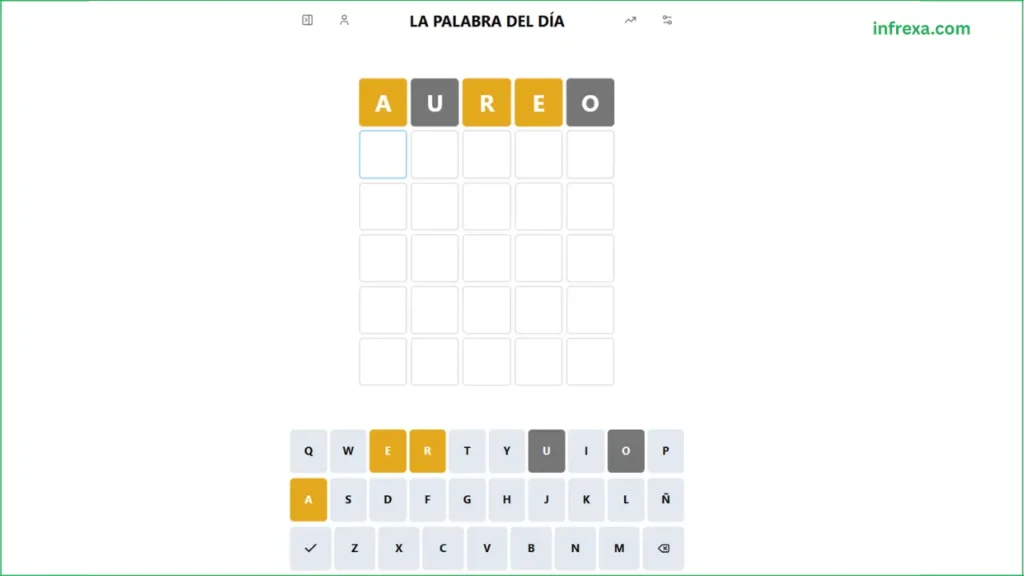When I started playing Spanish Wordle, I quickly realized that the strategies I used for the English version of Wordle were completely useless. It’s not just a translation of a game; it’s a distinct linguistic puzzle that forces you to think about the structure of Spanish words. The game, available for free on various web browsers, challenges you to guess a daily five-letter Spanish word in six attempts. It is a fantastic tool for reinforcing vocabulary and understanding common spelling patterns, but to win consistently, you need to change your approach.
How Spanish Wordle Works and What It Challenges
The mechanics are simple, mirroring the original game: you enter a valid five-letter Spanish word, and the game provides feedback using a color-coded system.
- Green: The letter is correct, and it is in the correct spot.
- Yellow: The letter is correct, but it is in the wrong spot.
- Gray: The letter is not in the mystery word at all.
You have six tries to find the word. The challenge isn’t the rules; it’s the structure of Spanish. Unlike English, Spanish words are heavily dominated by vowels. Trying to fit in many rare consonants early will quickly waste your attempts. The game directly improves your Spanish language skills by forcing you to consider common verb endings, noun genders, and the unique role of accented vowels.
The Accent Rule
This is the number one mistake I see new players make, and it will guarantee a loss if you ignore it: Accents are treated as entirely separate letters.
In Spanish Wordle, the accented vowels – Á, É, Í, Ó, Ú – are not the same as the unaccented A, E, I, O, U. If the target word is ÁRBOL and you enter ARBOL, the unaccented ‘A’ may show yellow or gray, misleading you. You must actively consider and test the accented version of the vowel when your clues lead you to believe a vowel is present but perhaps not in its most common form. This rule fundamentally changes the pool of possible words and is crucial for winning.
Strategies for Consistently Winning
Winning Spanish Wordle requires a strategy centered on vowel frequency and common linguistic forms.
1. Optimal Starting Words
Forget the English starter words. Spanish has a predictable and high frequency of vowels (A, E, O) and common consonants (R, S, T, L). My strategy is to start with a word that hits four or five different vowels and two common consonants.
- AUREO: This word hits all five unaccented vowels (A, U, R, E, O) immediately. Even if it doesn’t score a green, it provides maximum information about the most common letters in the Spanish language right from the start.
- SERIA: A strong alternative that prioritizes common consonants (S, R) along with three vowels (E, I, A).
2. Verb Forms
Many common five-letter words are verb conjugations. Once you have a few yellow letters, start thinking about what tense or person those letters might form. Words like HABLO (I speak) or PONES (you put) are common solutions. Considering common verb suffixes like -AR, -ER, or -IR is a great way to narrow down the pool of remaining possibilities after your second guess.
3. Double Letters
Spanish has common double-letter patterns that English often avoids. If yo ur guesses consistently show a yellow letter, consider words with double L (LL) or double R (RR), even though they technically count as single letters in the traditional alphabet. Testing words like CALLE or PERRO in a subsequent guess can be a fast way to confirm a difficult position.
4. Never Waste a Guess
Unlike the original game, I often sacrifice my second or third guess to eliminate the entire remaining vowel set or test common but unused consonants. For example, if my first word was AUREO and I got two greens and two grays, my second word should use the remaining common letters – like BAJAS (B, J, S) – to use the information I already have and quickly narrow the possibilities down to the single word. The goal is information gathering, not necessarily solving, on attempts one through three.
Benefits of playing Spanish Wordle
Playing Spanish Wordle is a reliable, free way to enhance your linguistic skills. It forces you to engage with the language’s fundamental structure, especially concerning verb forms and the placement of high-frequency vowels. It’s an effective mental exercise that improves retention of specific vocabulary you might not encounter in a textbook.






